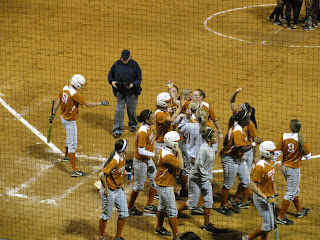


I teach my weekly account planning class in a classroom tucked inside a university building on hill in a quiet university town. It is ironic that a class that is supposed to teach students the skills to study people feels completely isolated from the rest of the world. My students can't even study or observe the students, staff or faculty who walk the halls or sidewalks of the campus because the class is held at night. Texas State is very, very quiet on Tuesday nights.
This isolation is not problem with survey research, as my students field their surveys almost entirely via the Internet. Yet for qualitative research, the Internet cannot provide the needed proximity to people. Qualitative research means watching, listening, smelling, hearing and sometimes even tasting the (real) world around you.
As we moved into the qualitative portion of the course, I was struggling to find a venue where we could all go to learn the skills of observation together. I could have given the students an assignment to go off campus on their own to study and observe a particular consumer segment. But instead, I wanted the observation exercise to be a group activity. It would be easier to teach the principles of observation if we all observed and experienced the same thing, at the same time.
So for pedagogical reasons, I jumped at the the idea of holding class at a sporting event when one of my students told me about what he said was just about the biggest, most wonderful upcoming event in the history of Texas collegiate sports. The University of Texas Longhorn were traveling down I-35 from Austin to play The Texas State University Bobcats in baseball/softball in San Marcos. Yes, this was going to be big, Texas style big. It would be a perfect venue for my students to hone their participant-observation research skills.
 I asked the students to bring a notepad and pencil for quick notes. I also told them to bring a camera as research stories are told in words AND images. I told them to enjoy the game as spectators, yet to also step back and watch the event as outsiders observing at a cultural, symbolic level.
I asked the students to bring a notepad and pencil for quick notes. I also told them to bring a camera as research stories are told in words AND images. I told them to enjoy the game as spectators, yet to also step back and watch the event as outsiders observing at a cultural, symbolic level. This was the assignment I gave the students"Pretend I am from the moon and I need a little explanation from you as to what is going on. Answer the following questions.1. What is going on? Explain what is happening here tonight. What is the meaning of all this?2. What is being 'consumed'?3. What are the business opportunities here tonight."
 That warm spring night, I didn't play the role of the teacher. I became researcher/account planner along with my students. I was there as alumna of the University of Texas. I was there as a spouse of a University of Texas faculty member. I was there as a long time Austin resident.
That warm spring night, I didn't play the role of the teacher. I became researcher/account planner along with my students. I was there as alumna of the University of Texas. I was there as a spouse of a University of Texas faculty member. I was there as a long time Austin resident.  But I was also there a Texas State faculty member. I grew up hearing stories about the greatness of both UT and Texas State University (Southwest Texas State Teachers College). As I always like to say, "half of my dad's family went to UT and the other half went to Texas State."
But I was also there a Texas State faculty member. I grew up hearing stories about the greatness of both UT and Texas State University (Southwest Texas State Teachers College). As I always like to say, "half of my dad's family went to UT and the other half went to Texas State." The night was a familiar, yet odd juxtaposition of Texas State and UT iconography: Longhorns on burnt orange t-shirts next to maroon and gold Bobcat banners and posters. It felt like a family reunion--- everyone related and familiar, just different with all the attitude of a family feud.
Here are some of the pictures full of symbols and meaning that tell one story of central Texas culture.






 a
a













1 comment:
Love it! Thanks for sharing. --Trina
Post a Comment